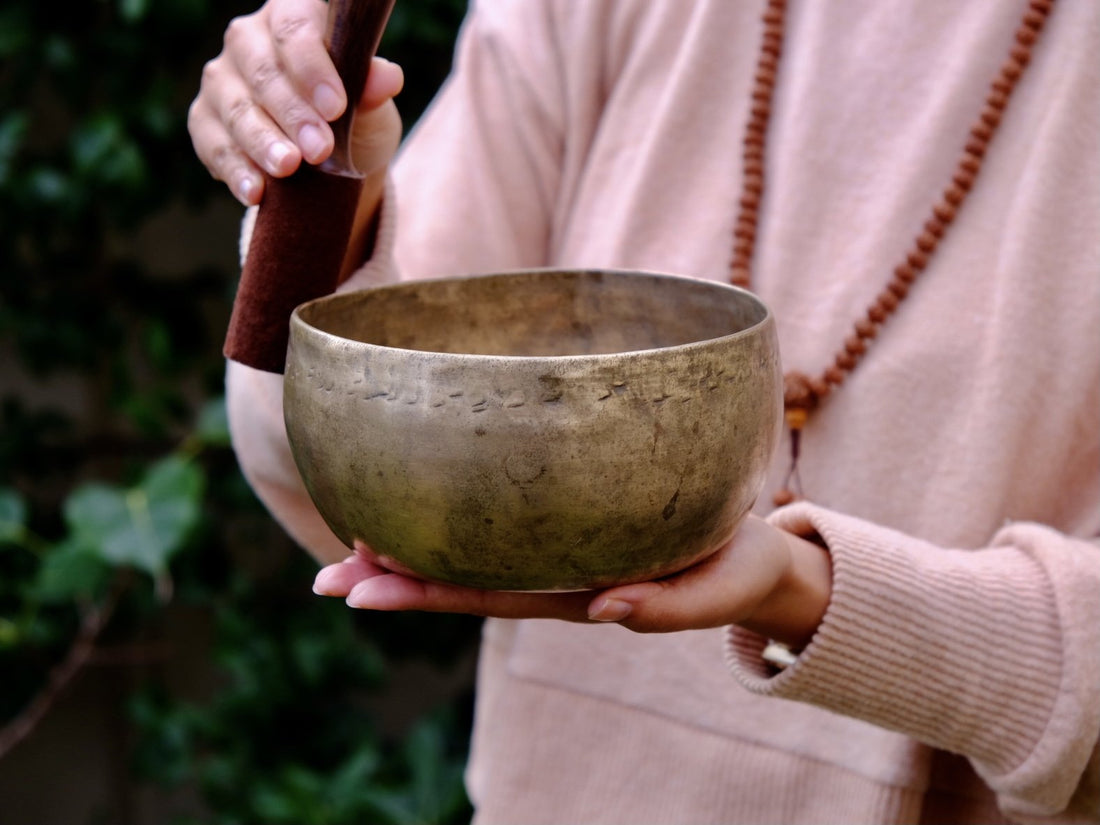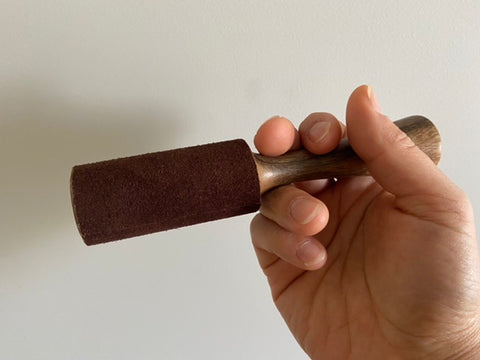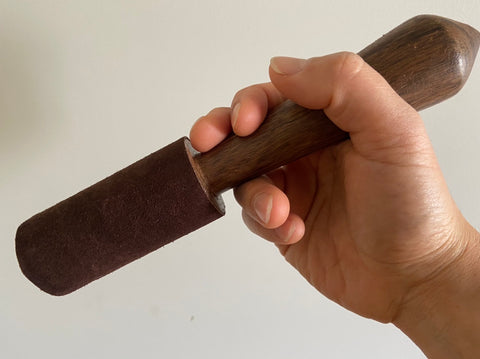
Playing Himalayan Singing Bowls 101
Share
Himalayan singing bowls are perhaps one of the simplest 'musical instruments' that one can play. We are very honoured to have many customers purchase their first singing bowls from us. In this blog post, we wanted to share some tips on how to play these wonderful bowls and get the most out of them. If you are a beginner looking to play the new bowl that you just got, then this post is for you.
1. Holding the bowl: When you hold a singing bowl, make sure that the palm of your hand is flat. If your fingers go up and too much against the wall, you will dampen the vibrations from it, and the bowl will not sound properly.

2. Mallet size: For those using a ringing stick/mallet to play the bowl, ensure that it is of the right size. If your mallet is too small, the bowl will not sound. If the mallet is too big or heavy, then the sound will be harsh and the lower/fundamental will not sound. At Tibet Shop Sydney, we include a free mallet of the right size with every bowl.
3. Holding the mallet: Hold the mallet in the same way you would hold a pen. The grip should be firm and comfortable. I tend to also use my middle finger for extra support.


3. Sounding the bowl with your hand: You can use your fist and palm to bring out the lower/fundamental sound from your bowl. This technique is well suited for medium and large sized bowls.
4. Striking the bowl/ golden tone: Striking the bowl with your mallet in an upwards direction will produce a golden/resonant tone. It is important to use the right sized mallet for this. The bowl will sound best when you strike on the upper walls of the bowl. You may also find subtle nuances in sound when striking the inner wall vs the outer wall of the bowl.
5. Rubbing the bowl with your mallet: Relax and apply gentle pressure to ring your bowl. It is important that your arm is moving (as opposed to just your wrist). If the bowl starts to rattle, then loosen your grip and slow down as your continue rubbing around the bowl. The pressure should not be too much against the wall of the bowl, else the overtones will dominate over the fundamental.
We also have another post here about Singing Bowl sounds and overtones. With practice, you will be able to isolate the lower fundamental from the overtones of the bowl.
Practice Practice Practice
Good things take time and practice will help build muscle memory. So set aside 10-15 minutes everyday to play your Tibetan/Himalayan singing bowl and explore its tones. This is a time to wind down, relax and breathe. We hope that whatever bowl you have brings you joy, peace and comfort. If you are after quality singing bowls, then view our entire range here.
